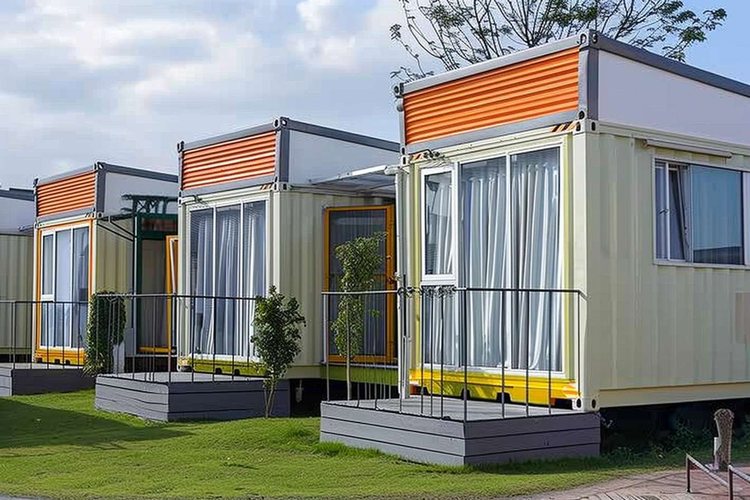Prefabricated Homes – Affordable and Efficient Housing Options with Fast Installation
Prefabricated homes represent a revolutionary approach to modern housing, offering homeowners a faster, more cost-effective alternative to traditional construction methods. These factory-built structures combine innovative manufacturing techniques with quality materials to deliver complete housing solutions in significantly less time than conventional building processes.

What Are Prefabricated Homes and How Do They Work?
Prefabricated homes are residential structures manufactured in controlled factory environments before being transported and assembled at their final location. Unlike traditional stick-built homes constructed entirely on-site, these homes undergo most of their construction process in specialized facilities where weather conditions, material quality, and building standards can be precisely controlled.
The manufacturing process typically involves creating individual modules or sections that include walls, floors, electrical systems, and plumbing components. These pre-built sections are then transported to the building site where they’re assembled on prepared foundations. This systematic approach reduces construction time from months to weeks while maintaining structural integrity and design flexibility.
Why Choose Efficient Prefabricated Homes Over Traditional Construction?
Efficient prefabricated homes offer numerous advantages that make them increasingly attractive to modern homeowners. The controlled factory environment eliminates weather-related delays, ensuring consistent progress regardless of seasonal conditions. Quality control measures in manufacturing facilities often exceed those possible at traditional construction sites, resulting in more precise assembly and better overall craftsmanship.
Energy efficiency represents another significant benefit, as factory-controlled construction allows for better insulation installation and air sealing techniques. Many prefabricated homes achieve superior energy performance ratings compared to site-built alternatives, leading to reduced utility costs and improved comfort for residents.
How Fast Can Prefabricated Homes Be Installed?
Installation speed stands as one of the most compelling advantages of prefabricated construction. While traditional home building typically requires 4-6 months or longer, prefabricated homes can often be completed within 2-8 weeks once the foundation is prepared. The manufacturing phase occurs simultaneously with site preparation, creating parallel workflows that dramatically reduce overall project timelines.
Weather delays, which commonly plague traditional construction projects, have minimal impact on prefabricated home installation since most work occurs in climate-controlled facilities. On-site assembly usually takes just a few days to weeks, depending on the home’s size and complexity, allowing families to move into their new homes much sooner than conventional construction would permit.
What Design Options Are Available for Modern Prefab Homes?
Contemporary prefabricated homes have evolved far beyond the limited, basic designs of earlier generations. Today’s manufacturers offer extensive customization options, including multiple floor plans, architectural styles, and finish selections that rival traditional home building choices. From modern minimalist designs to classic farmhouse aesthetics, prefab homes can accommodate diverse architectural preferences.
Interior customization extends to kitchen layouts, bathroom configurations, flooring materials, and fixture selections. Many manufacturers provide design software that allows potential homeowners to visualize different options and make informed decisions about their future homes. Modular systems also enable future expansion possibilities, allowing homeowners to add additional rooms or sections as their needs evolve.
Are Prefabricated Homes a Smart Investment in Today’s Market?
The investment potential of prefabricated homes has improved significantly as construction quality and design options have advanced. Modern prefab homes typically appreciate in value similarly to traditional homes when properly maintained and located in desirable areas. The key factors affecting investment value include build quality, location, local market conditions, and the manufacturer’s reputation.
Financing options for prefabricated homes have also expanded, with many lenders now offering conventional mortgage products for high-quality prefab construction. Some manufacturers provide financing partnerships that streamline the purchasing process, making homeownership more accessible for qualified buyers seeking efficient housing solutions.
How Much Do Affordable Prefabricated Homes Actually Cost?
Affordable prefabricated homes typically range from $50,000 to $300,000 depending on size, features, and customization levels. Basic single-wide models start around $50,000-$80,000, while luxury custom designs can exceed $200,000. These costs generally represent 10-25% savings compared to equivalent site-built construction when considering time, labor, and material efficiency factors.
| Home Type | Size Range | Price Range | Key Features |
|---|---|---|---|
| Basic Modular | 800-1,200 sq ft | $60,000-$120,000 | Standard finishes, basic floor plans |
| Mid-Range Custom | 1,200-2,000 sq ft | $120,000-$200,000 | Upgraded materials, flexible layouts |
| Luxury Prefab | 2,000+ sq ft | $200,000-$400,000 | Premium finishes, complex designs |
Additional costs include site preparation, foundation work, utility connections, and transportation, which typically add $20,000-$50,000 to the total project cost. Local building permits and inspection fees vary by municipality but generally range from $2,000-$8,000.
Prices, rates, or cost estimates mentioned in this article are based on the latest available information but may change over time. Independent research is advised before making financial decisions.
Prefabricated homes continue gaining popularity as construction technology advances and housing affordability challenges grow. These efficient building solutions offer compelling combinations of speed, quality, and value that address many contemporary housing needs. With improving designs, financing options, and market acceptance, prefabricated homes represent a viable path to homeownership for many families seeking modern, efficient living spaces without the extended timelines and higher costs associated with traditional construction methods.




